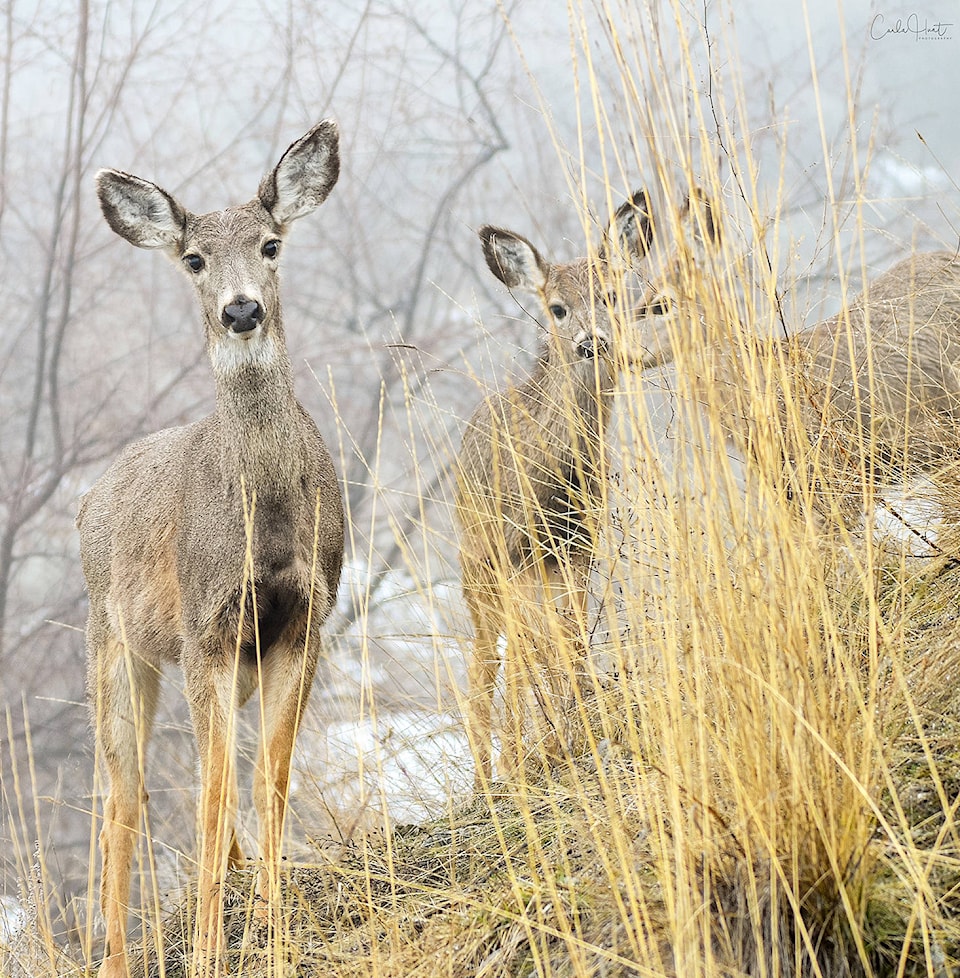It may seem like fires are increasing, but for mule deer populations it’s not enough to create the habitat they need.
According to the BC Wildlife Federation, the reason why mule deer are moving into urban environments is the lack of wildfire in the past several decades, said director Jesse Zeman, of the fish and wildlife restoration program with the BC Wildlife Federation.
Mule deer are used to adapting to the natural wildfire patterns that occur every 10 to 40 years, said Zeman. With the regrowth in Okanagan Mountain Park since the 2003 fire, the deer are in search of a new food source and have moved into town.
“Generally speaking habitat quality is going down, especially in Kelowna,” he said.
Mule deer like open habitat and as large brushes and trees fill in what was once open space, “deer are migrating to cities as a survival strategy,” said Zeman.
Proposed strategies for relocating deer like in the East Kootenays, or providing them with birth control aren’t effective to control the population either, he said. Once mule deer have gone through a generation, they become dependent on the urban environment. Survival rates in the wild are incredibly low for these deer.
Related: Deer cull petition gathers more than 1,000 signatures
“It makes people feel good but doesn’t do anything meaningful for the conflict. It doesn’t deal with the real issue, which is why are deer ending up in town?”
A new study will examine the relationship mule deer have with wildfire in the Southern Interior and around the Okanagan, said Adam Ford, a biology professor at UBCO and research chair for the Wildlife Restoration Ecology Lab.
The study, titled the Southern Interior BC Mule Deer Project, aims to determine why mule deer may be declining in the wild, but increasing in cities.
Ford believes there is a correlation between the lack of natural wildfires and deer migrating to urban environments.
“The science shows there’s a peak in food quality and forage availability for mule deer after a fire and that goes away after less than a decade. So from a mule deer’s perspective, we’d love to have fire come back to Okanagan Mountain Park,” he said. “The trick is how we can do this safely and affordability. There’s not a lot of public appetite to watch the hillsides burn.”
He said it’s hard to count animals and also find the funding to do so, so with this study researchers want to gather more than anecdotal evidence.
“But when you talk to people out on the land, they’ll say ‘oh, we used to come here and see 20 deer and now we don’t,’” he said. “Then you hear public complaints are ramping up around urban deer.”
The study, which will continue for the next three to five years, will start this winter with 90 GPS collars being placed on area deer. Funding has also been applied for to put an extra 60 collars on fawns. The first step will examine survival rates of the mule deer to see if the population is expanding or declining.
The provincial government recently allocated up to $100,000 to municipalities and First Nations communities to fund urban deer management projects.
City of Kelowna staff will be presenting a baseline idea to city council in the next month said Blair Stewart, parks services manager.
Funding is only available to municipalities with a management plan, said Stewart. “Basically we’re just going to be informing council on where our situation is and what recommendations going forward are going to be; which is mostly educating the public and doing some additions to our website.”
The city will be monitoring the urban deer population and collecting data.
To report a typo, email: edit@kelownacapnews.com.
<>@carliberry_
carli.berry@kelownacapnews.com
Like us on Facebook and follow us on Twitter.
